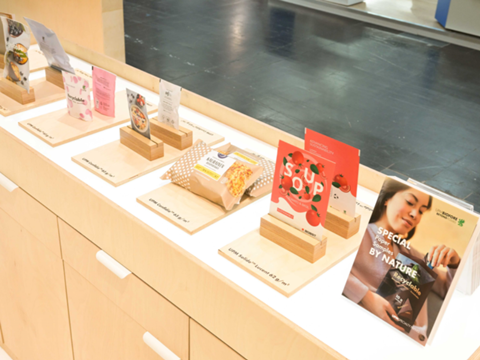
UPM Specialty Papers has announced it will be presenting its range of fibre-based, recyclable packaging papers at this year’s Fachpack, including solutions co-created with customers and partners across the packaging value network.
The company states the co-creation projects are leading to ‘recyclable, fibre-based breakthroughs’ that support packaging sustainability goals and fit with the aspirations of the upcoming EU Packaging and Packaging Waste Regulation.
UPM Specialty Papers plans to showcase the results of several partnerships at Fachpack.
One of these is a partnership with Michelman, where the company says it created three solutions including a high-barrier concept with oxygen and moisture barriers and water-based coatings, designed to provide a new option for end-uses such as chocolate. It adds that another collaboration with Michelman and BOBST resulted in high-barrier, recyclable paper-based packaging designed for products with a long shelf-life such as coffee and spices.
UPM Specialty Papers also partnered with Henkel and Koenig & Bauer on a solution which is said to have ‘excellent’ sealability properties, adequate moisture and grease barriers for confectionery end-use and can be used for digital printing. In collaboration with Fazer, heat-sealable, recyclable packaging was designed for Fazer’s Oat Rice Pies, apparently resistant to moisture and grease and aiming to eliminate the need for an additional plastic layer.
UPM, Adara Pakkaus and Lantmännen Unibake Finland are finalists in this year’s Sustainability Awards with their entry, a barrier paper inner designed to replace plastic inner bags for retail and food service. The solution is said to provide the necessary grease and moisture resistance for frozen breads while ensuring food safety and freshness.
In related news, Siegwerk recently revealed its new coating applications for paper mills, said to combine barrier functionality against liquids and water vapour with heat-seal capabilities. All coatings are said to be available worldwide and are tailored to individual customer requirements, including specific regional regulations and local market needs.
If you liked this story, you might also enjoy:
How are the top brands progressing on packaging sustainability?
Sustainable Innovation Report 2024: Current trends and future priorities
Reuse vs. single use – which is better for the environment?
The ultimate guide to global plastic sustainability regulation

















No comments yet